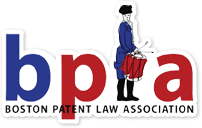
IPR Motions to Amend: Rays of Hope for Patent Owners Despite Gloomy Statistics
October 2016 -
By
Monica Grewal
, James Hill
, and Zachary Piccolomini
, WilmerHale

The
America Invents Act (AIA)
permits patent owners to move to amend claims of a patent subject to
. However, attempts to amend claims have been largely unsuccessful to date, and some of the hurdles patent owners face are not set forth in the rules. We first review statistics and relevant case law to survey the development of motion to amend practice, including the inter partes
reviewShinn Fu
1 decision from earlier this year, the first decision to grant a motion to amend after guidance provided by a few notable Patent Trial & Appeal Board (Board) and Federal Circuit decisions. We conclude with recommendations and practice tips for a successful motion to amend.
Motion to Amend Statistics and Practice
Motions to amend can be grouped into two buckets: (1) motions seeking cancellation of claims; and (2) motions seeking substitution of pending claims with amended claims. Regarding the first category, as of May 19, 2016, the Board has granted all 32 filed motions that sought cancellation of claims. The second category, however, has faced nearly the opposite result—of the 146 motions to amend as of May 19, 2016, the Board has only granted four: International Flavors
2, two for related Riverbed Technology
IPRs3, and Shinn Fu
. These four decisions are discussed below chronologically with pertinent case law.
Earlier this year, the United States Patent and Trademark Office (PTO) released Amendments to the Rules of Practice for Trials Before the Patent Trials and Appeal Board
(“The 2016 Amendments”) that took effect on May 2, 2016. The 2016 Amendments do not make any changes to the rules for motions to amend, but in response to comments, the amendments indicated that the PTO would “further consider ways to promote uniformity in the requirements for a motion to amend, such as by designating opinions precedential, issuing a standing order setting forth what requirements govern a proceeding for motions to amend, or other means.”
Thus, for now, the PTO has left patent owners to sift through Board and Federal Circuit decisions to understand the state of motion to amend practice. The 2016 Amendments address two important decisions that have contributed to the development of motion to amend practice: (1) Idle Free Systems
4 and (2) MasterImage 3D
5.
In the 2013 Idle Free
decision, the Board explained that the patent owner—not the petitioner—bears the burden to show a “patentable distinction over the prior art of record and also prior art known to the patent owner.” The 2016 Amendments explain that the ultimate burden of persuasion always remains with the patent owner. However, the burden of production shifts to the petitioner once the patent owner sets forth a prima facie
case of patentability of narrower claims. In response, the petitioner may explain why the patent owner did not make a prima facie
case, or may attempt to rebut that prima facie
case by addressing the patent owner’s evidence and arguments and/or by identifying and applying additional prior art. The patent owner can address these arguments and any new references in its reply.
Between the Idle Free
and MasterImage 3D
decisions, the Board granted the International Flavors
and Riverbed Technology
motions to amend. The May 20, 2014 decision in International Flavors
was notable as the first in which the Board permitted amendment of claims in an IPR. The motion was unopposed, but the Board still confirmed that (1) the proposed substitute claims were narrower than the original claims, (2) the motion set forth support for the amendments in the specification, and (3) International Flavors
demonstrated that the claims were patentable over the prior art in general.
On December 30, 2014, the Board granted, in part, two motions to amend in two related IPRs filed by petitioner Riverbed Technology
. The facts of the Riverbed Technology
decisions are somewhat atypical given that the patent owner did not submit a declaration in support of the claim amendments and used dependent claims as the basis for the amendments. Additionally, in its opposition, the petitioner did not challenge written description support, or identify a reference that taught certain limitations of the claims.
In the 2015 MasterImage 3D
decision, the Board provided clarification by expounding on what the phrases “prior art of record” and “prior art known to the patent owner” mean from the Idle Free decision. To demonstrate patentability over the “prior art of record,” the patent owner needs to distinguish over (a) material art in the prosecution history of the patent, (b) material art in the current proceeding, and (c) any material art of record in any other proceeding before the Board. To demonstrate patentability over “prior art known to the patent owner,” the patent owner must distinguish over any art “provided in light of a patent owner’s duty of candor, and any other prior art or arguments supplied by the petitioner.”
While not addressed in the 2016 Amendments, after Idle Free
and Master Image 3D
the Federal Circuit decided the Nike, Inc. v. Adidas AG
appeal in 2016, requiring the Board to reconsider its denial of the patent owner’s motion to amend. On whether the patent owner satisfied its duty of candor when demonstrating patentability, the Federal Circuit held that the patent owner’s simple statement that the claims were patentable over the prior art known to it but not of record satisfied
the patent owner’s duty even though it did not substantively discuss any of those references. The PTO conceded on appeal that given the clarification in MasterImage 3D
—issued after the Board’s decision in the IPR—the Board’s decision finding that the patent owner’s statement was insufficient for failing to address any specific references that were known to it but not of record was too aggressive.

The Board has now granted the first post-
MasterImage 3D
motion to amend in the April 22, 2016 Shinn Fu
decision. At the outset, the Board confirmed that the proposed substitute claim was narrower than the original claim. The Board also confirmed written description support for the substitute claim.
Regarding patentability, the Board explained that while the patent owner need not prove patentability “over every piece of art known to a skilled artisan, a patent owner is required to explain why the claims are patentable over the prior art.” Additionally, the Board explained that the patent owner’s duty of candor and good faith requires the patent owner “address not only prior art of record but also any relevant prior art known to it,” citing to Nike
.
The Board clarified that the patent owner need not expressly address every reference cited during prosecution; rather, the patent owner meets its duty of candor and good faith “by grouping prior art references together according to their particular teachings without having to make a presentation on each and every reference giving rise to that same teaching.” The Board rejected the petitioner’s argument that the patent owner failed to address a reference, reasoning that the patent owner argued patentability over substantially similar prior art, so the Board “do[es] not fault [the patent owner] for discussing only a representative few in its Motion to Amend.”
What Makes for a Successful Motion to Amend?
Practitioners can glean some best practices from decisions by the Board and Federal Circuit. The most common reason that motions to amend are denied is the patent owner’s failure to meet its burden to establish patentability over the prior art. This is consistent with the fact that it is the patent owner’s burden to demonstrate patentability of substitute claims, not the petitioner’s burden to demonstrate unpatentability of those claims.
Patent owners should pay careful attention to proposed claim amendments to ensure patentability over the prior art. While this seems obvious, in practice practitioners may need to consider other factors when making such amendments. For example, for cases with concurrent liti
Regarding what evidence should be set forth in motions to amend, per MasterImage 3D
and Shinn Fu
, a patent owner should present arguments over the prior art at issue in the IPR proceeding. Additionally, patent owners should distinguish the proposed claims from other art cited during prosecution. Shinn Fu
explains that to meet this burden, patent owners can group prior art according to their particular teachings without having to individually present on each reference. Lastly, patent owners should submit arguments over any other material art, such as art identified through concurrent litigation. If there is no such art, per the Nike
decision, patent owners should include an express statement that the patent owner knows of no other material art.
The second most common reason that motions to amend are denied is the patent owner’s failure to adequately identify written description support for the proposed substitute claims. Therefore, it is important that a patent owner’s motion to amend clearly provides written description support for the proposed amendments. This should be a relatively straightforward task, but nonetheless an important one; patent owners cannot avoid the principle that claim amendments must be supported by the specification.
Petitioners can attack motions to amend for lacking written description support and/or for failing to prove patentability. Additionally, petitioners have the opportunity to identify new art. Thus, when faced with a motion to amend, petitioners should be ready to search for new prior art to directly address the patent owner’s amendments.Published by the BPLA with authors’, WilmerHale’s, and Law360’s permission.
This article appears on WilmerHale’s blog on
May 19, 2016
.
This article appeared on Law360 on May 19, 2016
.
- Shinn Fu Company of America v. The Tire Hanger Corp., IPR2015-00208, Final Written Decision (Apr. 22, 2016) (Paper 24).
- International Flavors & Fragrances Inc., v. U.S. Department of Agriculture, IPR2013-00124 (May 20, 2014).
- Riverbed Technology v. Silver Peak Systems, Inc., IPRs 2013-00402 (Dec. 30, 2014) and 2013-00403 (Dec. 30, 2014).
- Idle Free Systems, Inc. v. Bergstrom, Inc., IPR2012–00027 (June 11, 2013) (Paper 26).
- MasterImage 3D, Inc. v. RealD Inc., IPR2015–00040, slip op. at 1–3 (July 15, 2015) (Paper 42).



Index
Community Calendar
Read more >
Table of Contents
President's Message by Erik Belt
Read more >
BPLA Submitted
Amicus
Brief in Design Case of the Century
Read more >
< Back
Message from the Editor-in-Chief
Read more >
The Defend Trade Secrets Act: Examining the DTSA’s Language, Use, and Future
Read more >
BPLA's ANNUAL MEETNG AND LUNCHEON
Read more >
RESTORING THE PATENT SYSTEM: Countering Supreme Court Attacks on What Can Be Patented
Read more >
IPR Motions to Amend: Rays of Hope for Patent Owners Despite Gloomy Statistics
Read more >
Nominations for the BPLA Officers and Board of Governors for 2016-2017
Read more >
In re Aqua Products
: Claim Amendments During Inter Partes
ReviewRead more >
Proposed Membership By-Law Change
Read more >
The 2016
Invented Here!
EventRead more >
2015 BPLA Annual Meeting Minutes
Read more >
Ex Parte
Reexamination as a Valuable Option for Challenging Patent ClaimsRead more >
PTAB Bar Asssociation
Read more >
McRO v. Bandai
: Latest Federal Circuit § 101 Decision Breathes New Life into Software PatentsRead more >
Members on the Move
Read more >








